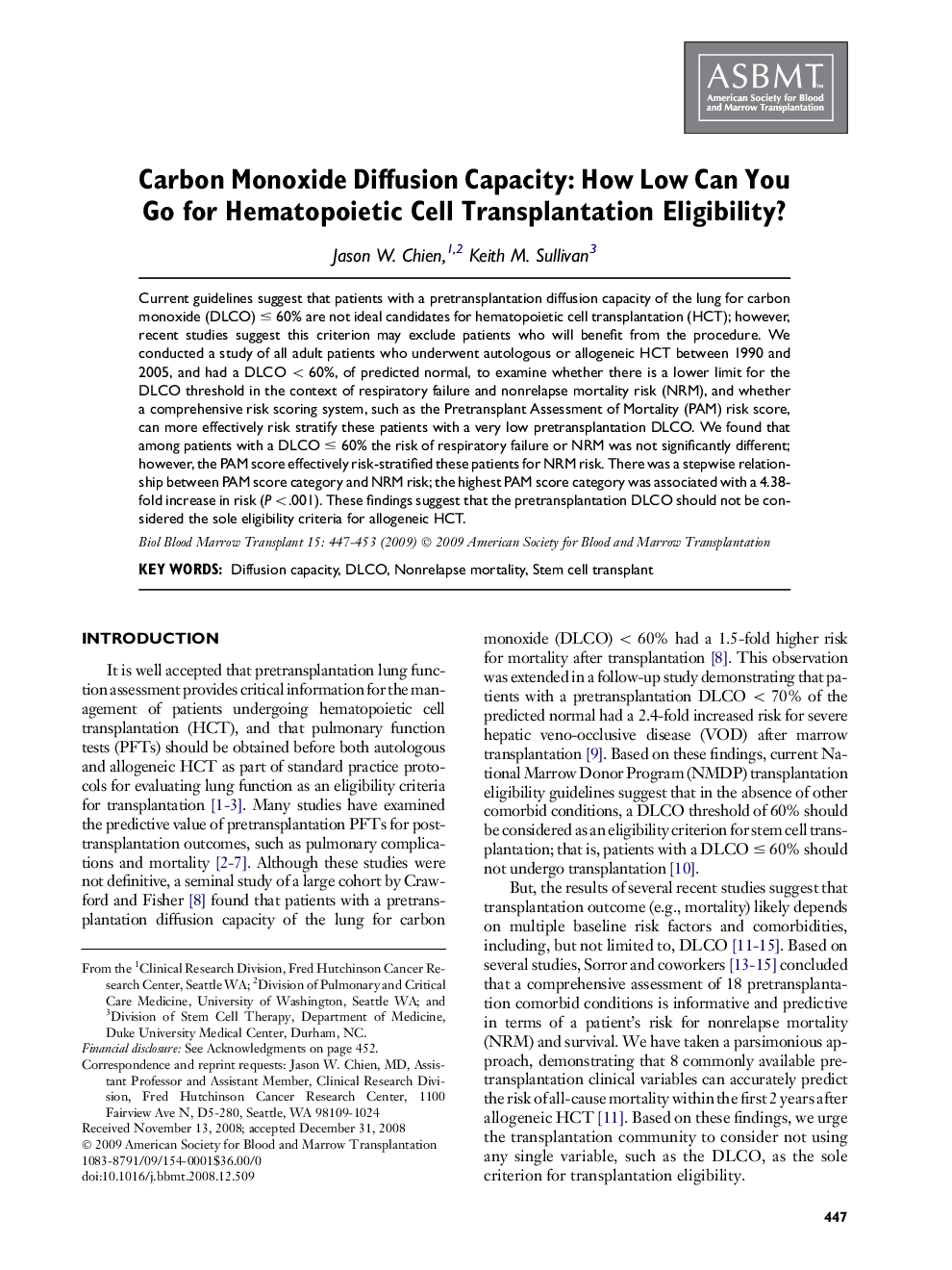| Article ID | Journal | Published Year | Pages | File Type |
|---|---|---|---|---|
| 2104279 | Biology of Blood and Marrow Transplantation | 2009 | 7 Pages |
Current guidelines suggest that patients with a pretransplantation diffusion capacity of the lung for carbon monoxide (DLCO) ≤ 60% are not ideal candidates for hematopoietic cell transplantation (HCT); however, recent studies suggest this criterion may exclude patients who will benefit from the procedure. We conducted a study of all adult patients who underwent autologous or allogeneic HCT between 1990 and 2005, and had a DLCO < 60%, of predicted normal, to examine whether there is a lower limit for the DLCO threshold in the context of respiratory failure and nonrelapse mortality risk (NRM), and whether a comprehensive risk scoring system, such as the Pretransplant Assessment of Mortality (PAM) risk score, can more effectively risk stratify these patients with a very low pretransplantation DLCO. We found that among patients with a DLCO ≤ 60% the risk of respiratory failure or NRM was not significantly different; however, the PAM score effectively risk-stratified these patients for NRM risk. There was a stepwise relationship between PAM score category and NRM risk; the highest PAM score category was associated with a 4.38-fold increase in risk (P < .001). These findings suggest that the pretransplantation DLCO should not be considered the sole eligibility criteria for allogeneic HCT.
